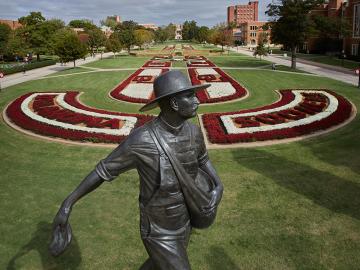Filter News
Area of Research
- (-) Materials (15)
- (-) Materials for Computing (18)
- Advanced Manufacturing (7)
- Biology and Environment (37)
- Building Technologies (1)
- Clean Energy (69)
- Computational Biology (1)
- Computational Engineering (2)
- Computer Science (4)
- Electricity and Smart Grid (1)
- Fusion and Fission (14)
- Fusion Energy (1)
- Isotopes (12)
- Mathematics (1)
- National Security (7)
- Neutron Science (16)
- Nuclear Science and Technology (1)
- Quantum information Science (3)
- Sensors and Controls (1)
- Supercomputing (21)
- Transportation Systems (1)
News Topics
- 3-D Printing/Advanced Manufacturing (4)
- Artificial Intelligence (1)
- Bioenergy (1)
- Biology (1)
- Chemical Sciences (6)
- Climate Change (1)
- Composites (2)
- Computer Science (5)
- Coronavirus (2)
- Critical Materials (1)
- Cybersecurity (1)
- Energy Storage (2)
- Frontier (1)
- Fusion (1)
- Isotopes (2)
- ITER (1)
- Materials (13)
- Materials Science (14)
- Microscopy (8)
- Nanotechnology (10)
- National Security (1)
- Neutron Science (7)
- Physics (1)
- Polymers (5)
- Quantum Computing (2)
- Quantum Science (4)
- Space Exploration (1)
- Sustainable Energy (2)
- Transportation (2)
Media Contacts

A world-leading researcher in solid electrolytes and sophisticated electron microscopy methods received Oak Ridge National Laboratory’s top science honor today for her work in developing new materials for batteries. The announcement was made during a livestreamed Director’s Awards event hosted by ORNL Director Thomas Zacharia.

A discovery by Oak Ridge National Laboratory researchers may aid the design of materials that better manage heat.

A new technology for rare-earth elements chemical separation has been licensed to Marshallton Research Laboratories, a North Carolina-based manufacturer of organic chemicals for a range of industries.

In experiment after experiment, the synthetic radioisotope actinium-225 has shown promise for targeting and attacking certain types of cancer cells.

Ten scientists from the Department of Energy’s Oak Ridge National Laboratory are among the world’s most highly cited researchers, according to a bibliometric analysis conducted by the scientific publication analytics firm Clarivate.

Researchers at ORNL designed a novel polymer to bind and strengthen silica sand for binder jet additive manufacturing, a 3D-printing method used by industries for prototyping and part production.

Amy Elliott, a group leader for robotics and intelligent systems at Oak Ridge National Laboratory, has received the 2021 ASTM International Additive Manufacturing Young Professional Award for her early career research contributions

A team led by the U.S. Department of Energy’s Oak Ridge National Laboratory demonstrated the viability of a “quantum entanglement witness” capable of proving the presence of entanglement between magnetic particles, or spins, in a quantum material.

ORNL and the University of Oklahoma, known as OU, recently executed a memorandum of understanding to officially recognize their partnership in pursuing shared research and development goals.

ORNL has named three researchers ORNL Corporate Fellows for their significant career accomplishments and continued leadership in their scientific fields.




